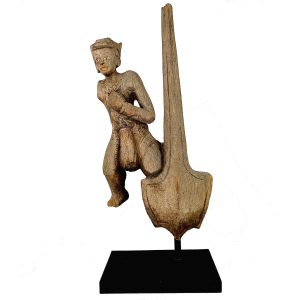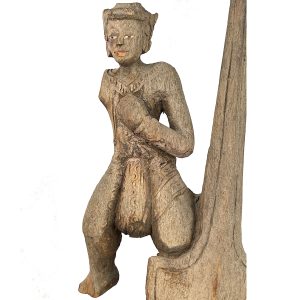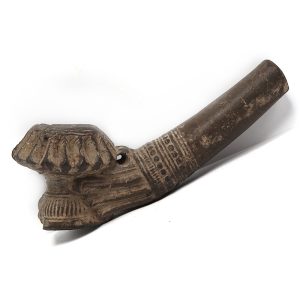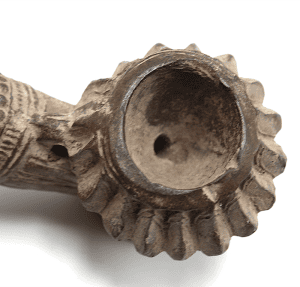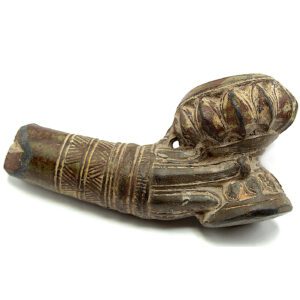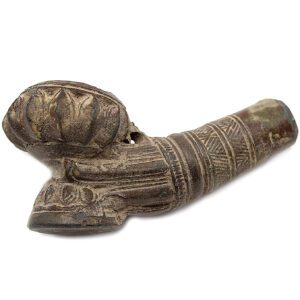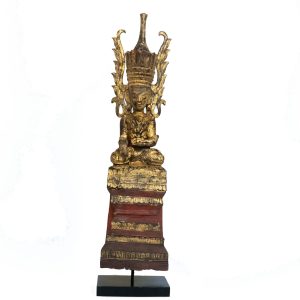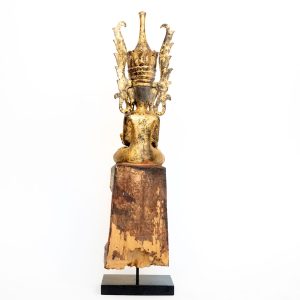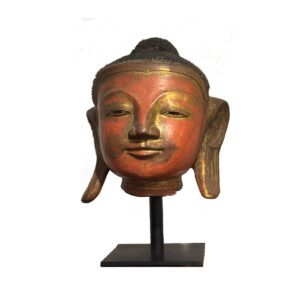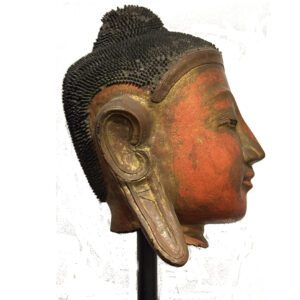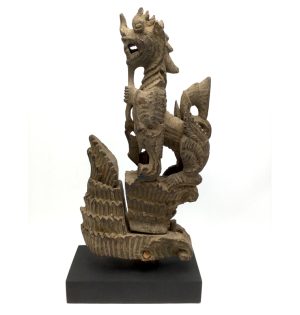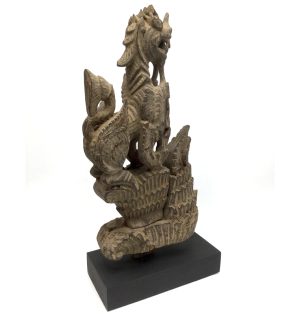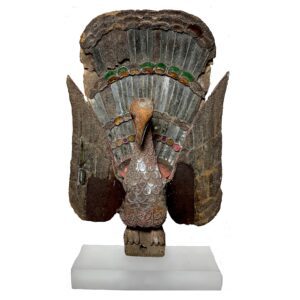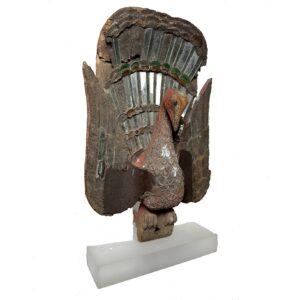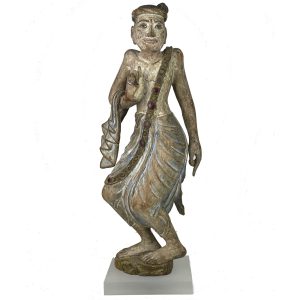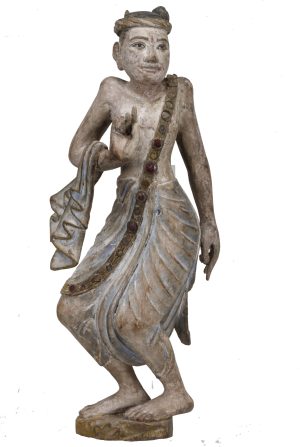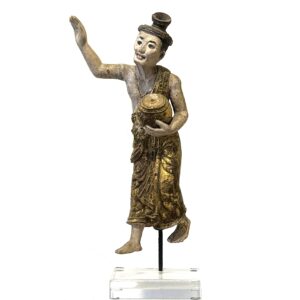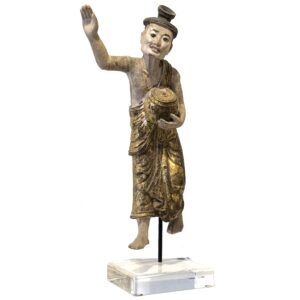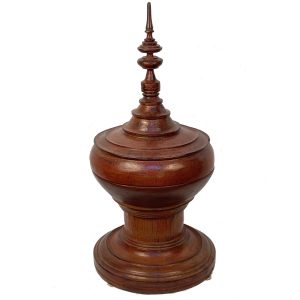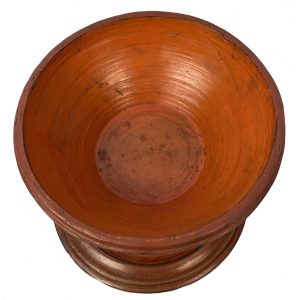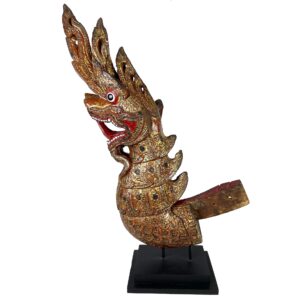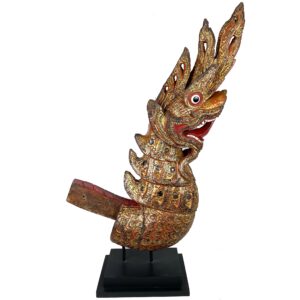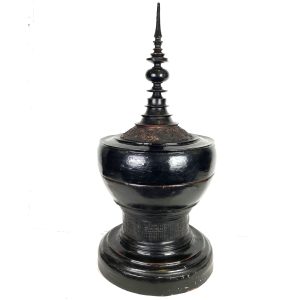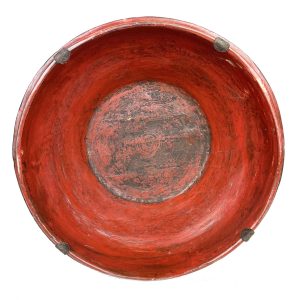Showing 1–12 of 16 results
-
Sale!


$450.00 Original price was: $450.00.$315.00Current price is: $315.00.
H: 23″ W: 10″ D: 5.5″ | CALL 213-568-3030 OR EMAIL [email protected] FOR SHIPPING
This fanciful teak carving is a Nat placed atop a large shield wearing a sarong and eyes with inset mother of pearl. Although of shamanistic origins, they are still in Buddhist temples, pagodas, government buildings, and in nat centers throughout Burma.
-
Sale!


$90.00 Original price was: $90.00.$80.00Current price is: $80.00.
H: 1.875” W: 1.75” D: 4” | FREE SHIPPING within continental us.
Mold made with intricate designs, clay earthen ware tobacco/opium pipes were woven into Burmese and Thai Hill Tribe social and cultural traditions. This is a unique gift a pipe smoker, although for decorative purposes only.
-
Sale!


$90.00 Original price was: $90.00.$80.00Current price is: $80.00.
H: 2” W: 1.75” D: 4” | FREE SHIPPING WITHIN CONTINENTAL U.S.
Mold made with intricate designs, clay earthen ware tobacco/opium pipes were woven into Burmese and Thai Hill Tribe social and cultural traditions. This is a unique gift a pipe smoker, although for decorative purposes only.
-
Sale!


$2,350.00 Original price was: $2,350.00.$1,950.00Current price is: $1,950.00.
H:26″ W: 10″ D: 5″| CALL 213-568-3030 OR EMAIL [email protected] FOR SHIPPING.
Rare, gilt covered Jambupati Buddha in Earth Witnessing position on high multi-tiered throne. Court attire, luxuriant jewelry and decorative flanges on faceted crown topped by long ushnisha. Strength and smile emphasize his spiritual and material power.
-
Sale!


$7,900.00 Original price was: $7,900.00.$6,500.00Current price is: $6,500.00.
H: 20″ W: 17.5″ | D: 17.25″ On Stand H:28″ | CALL 213-568-3030 OR EMAIL [email protected] FOR SHIPPING.
Large rare Mandalay Style antique Buddha head, red lacquer and gold leaf.Gentle, serene and compassionate expression, with downcast eye and sweetly smiling lips. Museum stand.
-


$325.00
H: 14.5” W: 17.75” D: 3.375” | FREE SHIPPING WITHIN CONTINENTAL U.S.!
Finely carved figures were attached to ox cart yokes to protect farmers from malevolent spirits who inhabited all seen/unseen sectors of their world. . This beautifully carved ox cart yolk image is a chinthe, a mythical Burmese lion/dragon creature commonly decorating many everyday items. A propitious spiritual and protective guardian, the animalsymbolizes power, courage, and strength. This carving displays the common traits of a lions with a long face, large eyes, a long sharp nose, a lion-like beard, and a flame-like shape on the top of his head. Masterfully carved with careful attention to details, see the deeply incised hairs that cover his body. The 2-part piece is held together with a wooden plug. Though for daily use, Burmese craftsmen created beautiful objects and finished them with the best materials they could afford.
-
Sale!


$725.00 Original price was: $725.00.$595.00Current price is: $595.00.
H: 16.5” W: 9.5” | 2.875” : | CALL 213-568-3030 OR EMAIL [email protected] FOR SHIPPING.
Carved Mandalay style peacocks with outspread feathers like this were placed over entrances to protect religious and government buildings. The peacock was emblem of last Burmese Dynasty symbolizing the monarchy descending from the sun.
-
Sale!


$1,350.00 Original price was: $1,350.00.$950.00Current price is: $950.00.
H: 19.75″ W: 7.75″ D: 5″ | FOR SHIPPING QUOTATION CALL US AT 213-568-3030 OR EMAIL [email protected]
This exquisite teak carving of a Mandalay Burmese male dancer wearing a sarong is in a fluid twisted pose emphasizing his strength, balance and grace with his raised hand is in a position similar to a Buddhist mudra. His humble status is reflected his head scarf and a bejeweled sarong with insert glass that reflect light and add movement and depth. His joyful beautiful face stares with open eyes and slightly parted lips It is simply a gorgeous work mounted on a contemporary frosted stand to complement any setting.
-
Sale!


$1,175.00 Original price was: $1,175.00.$975.00Current price is: $975.00.
H: 22″ W: 8.5″ D: 6.5″ | CALL 213-568-3030 OR EMAIL [email protected] FOR SHIPPING.
Lyrical wood provincial Burmese male dancer with drum in gilded Burmese sarong with glass and sequins. Set high on a transparent Lucite base, he appears to float in motion.
-
Sale!


$725.00 Original price was: $725.00.$525.00Current price is: $525.00.
H: 26″ Dia: 12.5″|CALL 213-568-3030 OR EMAIL [email protected] for shipping.
This elegant early 20th century red lacquer hsun-ok has a simple striking silhouette with raised circular layers on a pedestal base and woven vertical bands topped by a tall round finial resembling a Buddhist stupa.
-


$1,133.00
H: 32″ W: 20″ D: 7.5″ SHIPPING INFORMATION REQUIRED. CONTACT US AT 213-568-3030
This exceptional naga was one of two that comprised a gong stand. Gongs were used in Burma for both ceremonial and musical purposes in religious, state, or secular settings. A protection figure, this naga is a superb carving elaborately decorated with gold lacquer and pigmentation. He opens his mouth wide bearing mother-of-pearl teeth and a curled blood red mouth and tongue to drive away malevolent spirits, also reinforced by the large glaring eyes circled in red. On first glance it is menacing, but its history as a protector of Buddha Shakyamuni make it prized as a fanciful, gleeful guardian. His scales are arched relief designs of mixed lacquer and ash and they are highlighted with inset cut mirrors and green sequin-like glass “jewels.” It is mounted on a museum quality stand and is in excellent condition for its age and use despite missing an ear.
-
Sale!


$695.00 Original price was: $695.00.$495.00Current price is: $495.00.
H: 26.25″ Dia: 12.5″ |CALL 213-568-3030 OR EMAIL [email protected] FOR SHIPPING COST
Artfully shaped lacquered Hsun Ok for offerings to monks lid with a finial symbolizing a Buddhist stupa and applied mythical animals and floral decorations. Early 20th century pieces with these special details are harder to find and copies abound.
End of content
End of content

